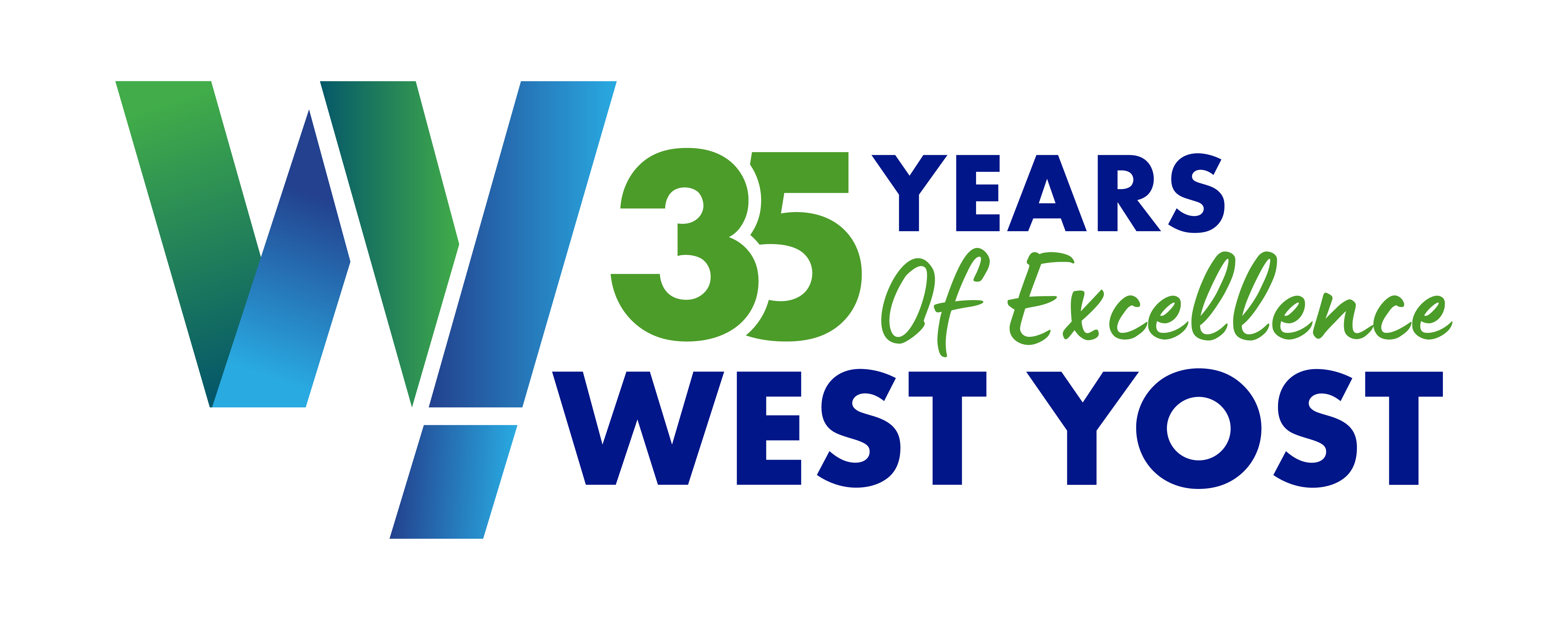Efficiency in Project Delivery: Maximizing Value for Our Clients

By Lindsay Smith, PE, West Yost Vice President & Whitney Sandelin, PE, Senior Engineer, Owner’s Advisory
This article contains and answers the following:
- Project Delivery Methods: Overview of DBB, FPDB, PDB, DBO, and CMAR.
- West Yost’s Role: Acts as Owner’s Advisor for project delivery.
- Selection Criteria: Based on project-specific goals and agency needs.
- Pros and Cons: Each method has unique advantages and disadvantages.
- Education Importance: Essential for effective implementation of the chosen method.
What are the most common project delivery methods?
What factors influence the selection of a project delivery method?
What are the advantages and disadvantages of different project delivery methods?
Why is education about the selected project delivery method important?
There are a variety of project delivery alternatives that can be utilized to deliver a successful project and maximize value for an agency. West Yost, in its role as Owner’s Advisor, assists clients with the evaluation and selection of a project delivery method that meets the agency and project-specific goals and supports the project through procurement, design, and construction to ensure project success. There is no one right project delivery method; all can be successful when implemented effectively. Depending on the project and agency drivers, one or more delivery methods may rise to the top. The following are the most common project delivery methods that West Yost has assisted clients in evaluating:
- Design-Bid-Build (DBB): For many, this is the most familiar project delivery method. Project drawings and specifications are prepared by an engineer for advertisement; contractor teams evaluate the bid documents and prepare their bids; and finally, the bidder with the lowest bid price is selected to construct the project.
- Fixed Price Design-Build (FPDB): Design-Build teams, consisting of both a contractor and engineer, prepare fixed price proposals to execute both the design and construction work for a fixed price. FPDB proposals are based on detailed procurement documents that describe the scope of the project and project design and performance criteria. The design-build team may be selected based on a variety of criteria, including the team’s proposed approach to the project, price, team composition, or innovative concepts, for example.
- Progressive Design-Build (PDB): Like FPDB, the Progressive Design-Build team consists of both a contractor and engineer. The PDB team is responsible for designing and constructing the project, similar to Design-Build, however the work takes place in phases. The first phase of the work is design. Design is typically developed to around 60%, or a level of development that enables the contractor to produce a price proposal for final design and construction. Also similar to FPDB, the proposing team may be selected based on a variety of criteria, including the team’s proposed approach to the project, schedule, team composition, or innovative concepts, for example.
- Design-Build-Operate (DBO): The DBO delivery method is identical to the Design-Build alternative, except that it includes an operations component. This delivery method is particularly appealing for projects where the agency does not have qualified staff available to operate and maintain the constructed project elements.
- Construction Manager at Risk (CMAR): CMAR project delivery begins with engagement of a design engineer and the start of the design process. Partially through the design process, the contractor that will construct the project is selected. The contractor’s role begins during design, providing input on constructability and cost saving measures. A price to construct the project is developed near the end of the design process.
Since there are numerous project delivery methods to be considered, identification of the project-specific goals is critical to establish prior to evaluation of the alternatives. Project goals may be high level, such as achieving a project schedule or delivering the project at a certain cost. Project goals may also be specific, such as the ability to allocate specific risks to the owner or project team or to identify innovative solutions for a particular technical issue. Other project goals may include receiving construction contractor input during the design process, selection of a team based on qualifications, overall project quality, and owner control during the design process.
Once the project-specific goals have been identified, the project delivery alternatives can be evaluated. General advantages and disadvantages for each alternative are described below, note that these can change substantially depending on the project drivers, including the complexity of the project:
- Design-Bid-Build (DBB): Because DBB is familiar to most owners, it is typically the most straight-forward alternative to implement and attracts the most interest and competition from the contractor community (although much of the construction community is starting to show a preference for the collaborative delivery models). The linear schedule and completion of design prior to bidding allows for a lot of owner input during the design process, compared to some of the other alternatives.
- Fixed Price Design-Build and Design-Build-Operate (FPDB/DBO): With FPDB and DBO, the owner has the advantage of understanding the project cost and proposed design solutions early in the project lifecycle (i.e., after receipt of proposals). Another advantage is the selection of the design-build team based on the qualifications of the team and individuals. Additionally, FPDB allows for the integration of construction efficiency and performance-based solutions into the design. To accelerate schedule, materials and equipment may be procured early by the design-builder and early design packages may be issued to accelerate the start of construction. A disadvantage is that the procurement process is typically long and expensive; prior to advertising the project, the procurement documents must be developed in sufficient detail to define the characteristics and design and performance standards of the project.
- Progressive Design-Build (PDB): Similar to FPDB, selection of the design-build team for PDB is based on the qualifications of the team and individuals. PDB has the advantage of allowing for significant owner involvement and input during the design process; owner input can help to guide technical decisions and to control project costs. Contractor involvement during the design phase also allows for the incorporation of construction solutions into the design. Final design and construction pricing is developed at the approximately 60% design milestone, and multiple pricing packages may be prepared for different elements of the project to support schedule acceleration. An additional advantage is that the procurement process is a less complex and less lengthy process compared to FPDB, because fewer project design details are developed by the owner in advance of the selection process and construction pricing is not prepared as part of the procurement.
- Construction Manager at Risk (CMAR): Advantages of CMAR include the owner’s ability to engage in the design process, similar to a DBB or PDB delivery method, and engagement of the contractor during the design process to provide constructability input. Engagement of the owner and contractor during design can help to control project costs and influence construction schedule. Other advantages include selection of the contractor based on qualifications and a procurement process that is not complex or lengthy. Dissimilar to FPDB and PDB, the engineer and contractor are not on the same team, and therefore there is a risk for conflict between the two parties. Another risk is that the entire construction team is not known at the time of contractor selection; many subcontractors will be selected by the contractor (although the owner can influence the selection).
“West Yost assisted the City in evaluating project delivery alternatives for two large capital projects. Ultimately, we selected a different delivery method for each project, Progressive Design-Build and Design-Build-Operate. Evaluation of the various delivery methods available to us helped us to select the most suitable delivery method based on our priorities and objectives for each project.”
– Stan Gryczko, City of Davis Public Works Utilities and Operations Director
Once the project delivery selection is made (with confirmation from legal counsel related to current regulatory authorities), education about the selected project delivery method should be provided, especially if it is a new delivery method to the agency. Effective education about the various project delivery alternatives begins during the project delivery method evaluation and selection phase and is continually reinforced throughout the duration of the project. Education should be provided at all levels of the organization, including to staff who will be directly engaged in the project, management, and council or board members, ensuring that all staff involved in the project understand the nuances of the delivery method and their roles to support project success.
By evaluating the range of project delivery methods available and selecting a delivery method based on the specific project needs and goals, projects can be delivered efficiently and effectively. West Yost is experienced in guiding clients through the evaluation process and supporting projects using a variety of delivery methods. We are excited to continue working with our clients to select the project delivery methods most appropriate for their projects and delivering successful projects.
By Lindsay Smith, PE, West Yost Vice President & Whitney Sandelin, PE, Senior Engineer, Owner’s Advisory
Lindsay Smith is a Vice President and leads our program and procurement management team at West Yost. Lindsay has served as program manager on multiple large-scale water supply projects involving owner’s advisory services, program management, and alternative contract delivery.
Whitney Sandelin is a civil engineer with a focus in water and wastewater systems planning and design projects. Her experience includes regulatory compliance assistance, on-site jar testing, planning and preliminary design studies, detailed design services, and construction phase services.
